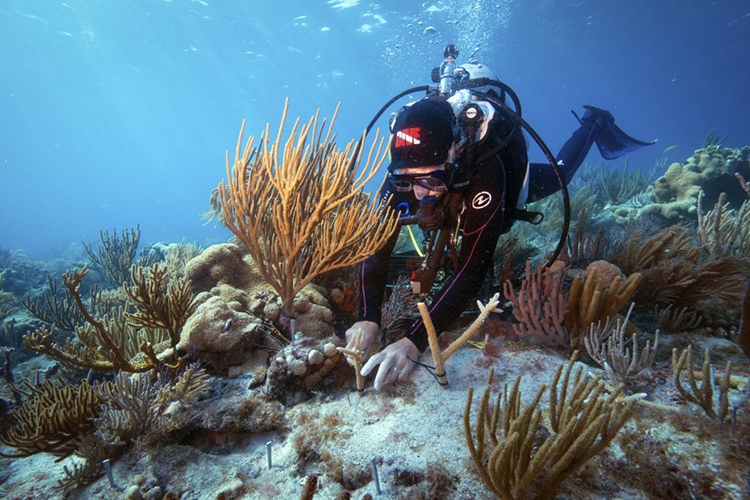Seagrass Planting Projects: Restoring Scotland's Coastline

Table of Contents
The Importance of Seagrass Meadows in Scotland's Ecosystem
Seagrass meadows are often called the "lungs of the ocean" and for good reason. Their contribution to Scotland's marine environment is immense, providing a multitude of vital ecosystem services. These underwater grasslands are incredibly effective at carbon sequestration, absorbing carbon dioxide from the atmosphere at a rate much higher than many terrestrial forests. This plays a crucial role in mitigating climate change and improving Scotland's carbon footprint.
- Carbon sequestration and climate change mitigation: Seagrasses are highly efficient at capturing and storing atmospheric carbon dioxide, contributing significantly to climate change mitigation efforts.
- Habitat provision for diverse marine life: These meadows act as vital nurseries for numerous fish species and invertebrates, providing shelter and food sources, supporting biodiversity and healthy fish stocks.
- Coastal protection against erosion and storm damage: The dense root systems of seagrass stabilize sediments, reducing coastal erosion and providing a natural buffer against storm surges, protecting Scotland's vulnerable coastlines.
- Water filtration and improved water quality: Seagrasses act as natural filters, improving water clarity and reducing pollution levels, benefiting both marine life and human activities.
- Support for commercial and recreational fisheries: Healthy seagrass meadows support thriving fish populations, which directly benefits commercial and recreational fisheries in Scotland.
Challenges in Seagrass Restoration in Scotland
Despite their importance, Scotland's seagrass meadows face significant challenges. Decades of human activity, coupled with the impacts of climate change, have led to substantial habitat loss. Seagrass restoration is not without its difficulties.
- Historical loss of seagrass due to human activities: Pollution from agricultural runoff, sewage discharge, and industrial activities has historically damaged extensive areas of seagrass. Dredging for navigation and coastal development has also contributed significantly to habitat destruction.
- Impact of climate change: Rising sea temperatures, increased storm frequency and intensity, and ocean acidification all pose significant threats to the survival and growth of seagrass.
- Difficulties in seagrass propagation and transplantation: Successfully transplanting seagrass requires careful consideration of environmental conditions, including water quality, light availability, and sediment type. The process can be labor-intensive and requires specialized knowledge.
- Funding limitations and logistical challenges: Seagrass restoration projects often face funding constraints and logistical challenges related to access to remote coastal locations and the specialized equipment needed for planting and monitoring.
Successful Seagrass Planting Projects in Scotland: Case Studies
While challenges exist, several successful seagrass planting projects demonstrate the feasibility and positive impact of restoration efforts in Scotland. These initiatives offer valuable lessons and inspire further action.
- Project Name 1 (Example): Loch Ryan. This project, involving local communities and marine scientists, successfully replanted a significant area of seagrass using a combination of seed dispersal and transplantation techniques. The project resulted in increased biodiversity and improved water quality.
- Project Name 2 (Example): Firth of Forth. This large-scale initiative focused on restoring degraded seagrass meadows using a combination of innovative planting techniques and ongoing monitoring. The project showcased the potential for large-scale seagrass restoration in challenging environments.
- Project Name 3 (Example): Isle of Skye. A community-led initiative successfully used locally sourced seagrass seeds to restore small patches of seagrass in a sheltered bay, demonstrating the potential of small-scale, community-based restoration efforts. (Note: These are examples – replace with actual project details)
Getting Involved in Seagrass Planting and Coastal Restoration
You can play a crucial role in the restoration and protection of Scotland's seagrass meadows. There are many ways to get involved, from volunteering to supporting organizations dedicated to this vital work.
- Volunteer opportunities with environmental organizations: Many environmental organizations in Scotland offer volunteer opportunities involving seagrass monitoring, planting, and data collection.
- Citizen science initiatives to monitor seagrass health: Participate in citizen science programs that contribute valuable data on seagrass distribution, health, and resilience.
- Ways to support organizations involved in seagrass planting projects: Donate to, or advocate for, organizations actively involved in seagrass restoration and conservation.
- Educational resources and further information on seagrass: Learn more about seagrass ecosystems and the importance of their conservation through educational resources and online platforms.
Conclusion
Seagrass planting projects are crucial for restoring Scotland's coastline and its rich biodiversity. These underwater meadows provide invaluable ecosystem services, contributing to climate change mitigation, coastal protection, and the health of our marine environment. While significant challenges remain, successful projects demonstrate the potential for large-scale restoration. By actively supporting and participating in seagrass planting projects and coastal restoration initiatives, we can collectively contribute to a healthier, more resilient coastline for future generations. Learn more about seagrass planting initiatives in Scotland and consider volunteering or supporting relevant organizations to ensure the continued restoration of Scotland's coastline through active seagrass planting projects. Find organizations involved in seagrass conservation in Scotland through online searches, or contact local environmental groups.

Featured Posts
-
 Ufc 314 Volkanovski Vs Lopes Full Fight Card Date And Time
May 04, 2025
Ufc 314 Volkanovski Vs Lopes Full Fight Card Date And Time
May 04, 2025 -
 Fleetwood Mac Tribute Concert Seventh Wonder In Perth Mandurah Albany
May 04, 2025
Fleetwood Mac Tribute Concert Seventh Wonder In Perth Mandurah Albany
May 04, 2025 -
 Impact Of La Palisades Fires Celebrities Affected And Home Losses
May 04, 2025
Impact Of La Palisades Fires Celebrities Affected And Home Losses
May 04, 2025 -
 Gibonnijeva Posjeta Sarajevo Book Fairu Sto Ocekivati
May 04, 2025
Gibonnijeva Posjeta Sarajevo Book Fairu Sto Ocekivati
May 04, 2025 -
 Sydney Sweeney Denies Reconciliation With Ex Fiance Despite Public Appearances
May 04, 2025
Sydney Sweeney Denies Reconciliation With Ex Fiance Despite Public Appearances
May 04, 2025
